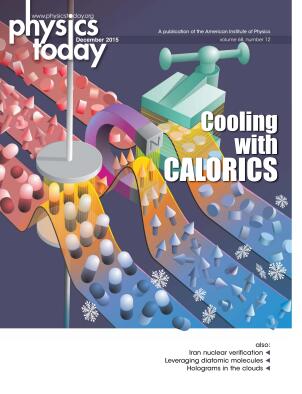Academies urge new weapons designs
DOI: 10.1063/PT.3.3017
To help maintain the skills of US nuclear weapons designers, the Department of Energy’s National Nuclear Security Administration (NNSA) should have Los Alamos and Lawrence Livermore National Laboratories compete to develop new warhead designs, build components, and assemble prototype weapons, says a new report from the National Academies of Sciences, Engineering, and Medicine. Once a mainstay of the US weapons design process, full-scale competitions have not been held since 1992, when a moratorium on nuclear testing began. According to the report, the lack of competitions has meant that the labs have not engineered or fabricated components and systems and thus designers have been unable to exercise their complete skill sets.
The congressionally mandated report, Peer Review and Design Competition in the NNSA National Security Laboratories, emphasizes that the competitions should be done with the understanding that final prototypes would not result in new warheads entering the stockpile. But if the recommendations were followed, such a program may arouse concerns that it could lead to a new weapons system.
That’s what happened to the Reliable Replacement Warhead (RRW) program, held in the past decade. That effort began with a design competition between Los Alamos and Lawrence Livermore. Intended to produce modernized weapons without changing the explosive yields or roles of warheads in the current stockpile, the RRW was canceled by Congress in 2008 amid charges that it was unnecessary and would harm US nonproliferation objectives. (See Physics Today, June 2007, page 35
The new report urges the labs to go further and actually assemble devices that could be tested, though without the nuclear explosive. “In order to adequately exercise their design skills, designers must ‘close the loop’ and, at the very least, receive feedback from the real world about whether their design is practical and can be manufactured,” it says.
Although the competitive peer-review functions that Lawrence Livermore and Los Alamos perform on each other’s work are “healthy and robust” for most of their scientific work, the report says, that’s not the case with regard to weapons design. Some studies have helped to maintain the labs’ competence in the modeling of new weapons designs, but they haven’t been validated by engineering and fabrication of new systems.
Dimitri Kusnezov, chief scientist at the NNSA, alluded to the RRW experience when he commented on the report. “The challenge for us as we read the recommendations is, How do you take the best out of this in terms of enhancing peer review and intellectual tensions we require in the laboratories and the [weapons production] plants against the backdrop that the decisions are not entirely ours to make in this space?” he says. “Because the work we do sits at the intersection of science and policy.”
The report, written by a committee cochaired by Jill Dahlburg of the US Naval Research Laboratory and Paul Peercy of the University of Wisconsin–Madison, warns that the number of science and engineering personnel at Los Alamos and Lawrence Livermore who have “hands-on experience in nuclear weapons design and nuclear explosion testing continues to decrease and will reach zero in the next decade or so. Once this experience is lost, it could limit the nation’s strategic options, and it will be difficult to re-establish.”
To avoid losing a capability that could be essential for responding to evolving threats, the report states that “the NNSA complex needs a means of exercising, on a regular and on-going basis, the full suite of nuclear weapon design, development, and engineering capabilities through true design competitions.” It says that the more than 50 design competitions that were held during the Cold War led to significant reductions in the size and weight of nuclear warheads and to safety improvements.
Unlike the two nuclear design labs, Sandia National Laboratories is responsible for replacing aging and obsolete nonnuclear components in stockpiled weapons and for carrying out life-extension programs for aging warheads. Those activities have exercised the skills of Sandia’s designers, the report says. “However, these exercises do not stimulate the full creativity and innovation that result from a true blank slate design competition that includes engineering and building a prototype.”
Kusnezov says he experienced personally “how RRW brought people together in ways that challenged themselves across the complex. I saw the fierceness with which Livermore and Los Alamos were at each other in terms of trying to outdo each other in design and how confident you could be.”
The report notes, however, that the manner in which the RRW competition was conducted, with the labs criticizing each other’s designs in the setting of a large meeting, “created deep-seated negative feelings on the part of the two … laboratories and mistrust of NNSA that still exists.”
More about the Authors
David Kramer. dkramer@aip.org
